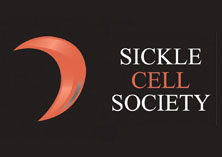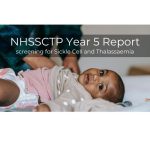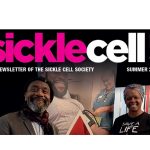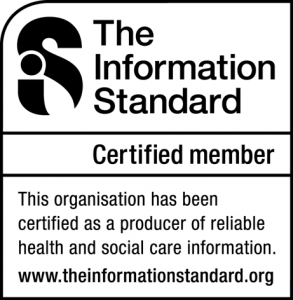This is a report on external research. It is not endorsed by the Sickle Cell Society and does not form part of our Information Standard-accredited information
Dr Veronica (Nicky) Thomas
Chartered Health Psychologist/Senior Lecturer, Department of Haematology, Guy’s & St. Thomas’ Hospital & United Medical & Dental School of Guys, King’s College & St. Thomas’
April 1999
Executive Summary
Project Details:
Project Title: Cognitive Behaviour Therapy for the Management if Sickle Cell Disease Pain
Principle Investigator: Dr Veronica (Nicky) Thomas
Project Findings:
Objectives: To evaluate the effectiveness of a cognitive behavioural group therapy intervention for the management of sickle cell disease pain.
Design: The project was a longitudinal, multi-centred, randomised controlled trial.
Participants: Ninety-seven patients with SCD were recruited from seven London hospitals.
Interventions: Participants were randomly allocated to one of three treatment conditions: a CBT pain management group, an Attention Placebo group and a no intervention control.
Main Outcome Measures: All participants completed a number of measures at baseline and immediate, 6 months and 12 months post-intervention stages to assess psychological well-being, pain and coping.
General Health Questionnaire 28
(GHQ 28; Goldenberg & Williams, 1988)
Coping Strategies Questionnaire, Revised Sickle Cell Version for Adults (CSQR; Gil et al., 1989; Rosenstiel & Keefe, 1983; Gil et al,. 1989)
Pain Self Efficacy Questionnaire
(PSEZ; Nicholas, 1989).
Short Form McGill Pain Questionnaire
(SF-MPQ; Melzack, 1987).
Beliefs About Pain Control Questionnaire (BPCQ; Skevington, 1990)
Other Measures Included:
Cost Analysis Questionnaire
Total number of A&E visits
Total number of Hospital Admissions
Duration of Hospital Stay & Intervention Evaluation Questionnaire
Project Findings: Significant post-intervention treatment group differences in favour of the CBT intervention were identified for nearly all of the psychological measures using the Kruskal-Wallis test at immediate post-intervention and at 6-month post-intervention. Analysis at 12-month post-intervention demonstrated that the potency of CBT had waned and scores had returned to baseline levels. Within groups significant differences over time were also found for CBT condition for the majority of the measures at immediate post-intervention and 6-month post-intervention and between immediate post-intervention 12-month post-intervention were achieved. Comparison of the baseline scores with the 6-month post-intervention revealed that overall the scores at six months for the CBT participants were significantly higher than at baseline. Whilst there were some significant differences between baseline scores and those at 12-month post-intervention CBT, overall the scores were non-significant indicating that scores had returned to baseline levels.
Conclusions: Overall, the cognitive behavioural approach employed appears to be immediately effective for the management of SCD pain in terms of reducing psychological distress and pain improving coping. These benefits are still apparent at 6 months post-intervention. However, by 12 months post-intervention the scores on the majority of the outcome measures have returned to baseline levels. CBT was not associated with significant reductions in frequency of hospital admissions, frequency of accident and emergency visits or length of duration in hospital stay. Further analysis estimating whether CBT is cost-effective is in progress and will indicate whether financial benefits are to be gained.
Relevance to the NHS: CBT is an effectives therapy when combined with standard medical treatments as it helps patients manage the level of distress associated with sickle cell disease. The treatment improves patients’ self- efficacy, improves positive coping strategies and facilitates a greater sense of personal control, thus making a significant impact on the quality of life with SCD. Consequently the relevance to the NHS is great.
Following patients over time has demonstrated that the effect of CBT is relatively short lived. Data at 6 months post intervention revealed that the gains achieved is still significantly better compared to the two control groups. However, by 12 months post-intervention, the failed to reveal significant differences between treatment groups suggesting that the efficacy of CBT had waned. This finding suggests the need for CBT to be part of an ongoing normal package of care available for all patients with Sickle Cell Disease. The clinical implication is that CBT should be offered to patients on a 6 monthly basis. The patients’ evaluation of the CBT intervention are very positive and they indicate that it should be open to all sickle cell sufferers.
In my present post as Health Psychologist at Guy’s and St. Thomas’ Hospital Trust, CBT is the main approach utilised and is very effective in helping improve coping, reduce psychological distress and reduce admission rates and lengths of hospitalisation.
Acknowledgements: I would like to thank all the patients who took part in this study as research would not have been possible without them.
I would also like o thank NHS Executive (South Thames R7D) for providing the research grant that was used to fund this research.
Thanks also to Marks & Spencer’s (especially Lord Andrew Stone and Ray Walters) for helping to arrange a charity concert that raised funds to enable funding of the start-up activity of the project.
Grateful thanks to Professor Charles Normand and his Colleagues Dr Reinhold Gruen for their expert help with the cost-effectiveness aspects of this research.
Finally our appreciation and thanks goes to all the sickle cell nurse specialists, haematologists, special nurse counsellors and psychologists for their help in recruiting patients.
The Full Research Article Can be Found In:
Thomas, V.J. Dixon, A.L. Milligan, P. (1999), Cognitive-behaviour therapy for the management of sickle cell disease pain: An evaluation of a community-based intervention. British Journal of Health Psychology, 4, 209-229









